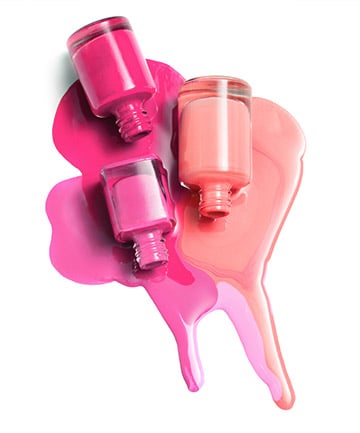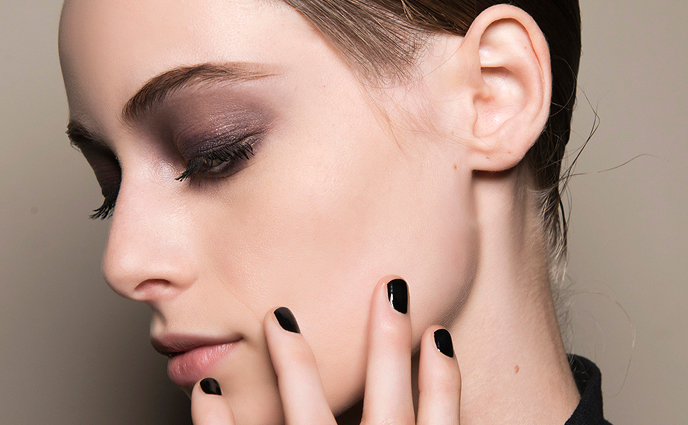Three-free polishes used to be the non-toxic nail world's darling. But now, these clean polishes, free from what's known as the "toxic trio," are being one-upped by nail polish brands that boast a list of banned ingredients anywhere from five to 10 ingredients long. But do you really need to cast aside your three-frees? Cosmetic chemist Arlette Forshage, founder of Hygieia Cosmedix, says no.
"By and large, the nine-free trend in non-toxic nail polishes is more a marketing ploy than actually having a basis in science," explains Forshage, who has produced cosmetics for beauty giants like Bath & Body Works and CoverGirl. For example, some products list gluten on their list of excluded ingredients, but that doesn't mean much. "Wheat by-products have never been part of a typical nail polish formulation, and therefore, the removal is moot," says Forshage.
Likewise, high-numbered non-toxic polishes claim to be free of chemicals that aren't typically used in nail polishes anymore -- like xylene and lead. In other words, five-free polishes may have the same exact ingredient list as a seven-or even 10-free formula.
Additionally, while some ingredients in any nail polish might be harmful at high levels, consumers typically aren't using polish in a way that could be dangerous, explains chemist Ron Robinson. "In general, nail polish is safe if used correctly," he says. Still, if you're concerned for your nail technician who works with these chemicals all day, keeping your polishes on the cleaner side could help.
Ahead, we map out exactly what's missing in all of your favorite polishes, plus the prettiest colors you can feel good about buying.
Image via Getty
"By and large, the nine-free trend in non-toxic nail polishes is more a marketing ploy than actually having a basis in science," explains Forshage, who has produced cosmetics for beauty giants like Bath & Body Works and CoverGirl. For example, some products list gluten on their list of excluded ingredients, but that doesn't mean much. "Wheat by-products have never been part of a typical nail polish formulation, and therefore, the removal is moot," says Forshage.
Likewise, high-numbered non-toxic polishes claim to be free of chemicals that aren't typically used in nail polishes anymore -- like xylene and lead. In other words, five-free polishes may have the same exact ingredient list as a seven-or even 10-free formula.
Additionally, while some ingredients in any nail polish might be harmful at high levels, consumers typically aren't using polish in a way that could be dangerous, explains chemist Ron Robinson. "In general, nail polish is safe if used correctly," he says. Still, if you're concerned for your nail technician who works with these chemicals all day, keeping your polishes on the cleaner side could help.
Ahead, we map out exactly what's missing in all of your favorite polishes, plus the prettiest colors you can feel good about buying.
Image via Getty
Nail polishes free of formaldehyde, toluene and dibutyl phthalate (DBP) are the OG of non-toxic nail polishes, and it used to be the quality everyone hip to the green scene looked for in their bottles of lacquer. Now, though, it's hard to find a polish that isn't three-free. And with good reason: formaldehyde is a known carcinogen; toluene is found in gasoline and is a respiratory toxicant; and dibutyl phthalate, the chemical that makes plastic flexible, is listed as having potentially harmful reproductive effects by the Environmental Protection Agency. These are the three substances that pose the most risk to nail salon workers. Here are a few of our favorite three-free nail polishes.
Image via Getty
Image via Getty









